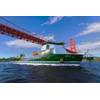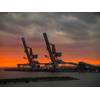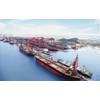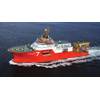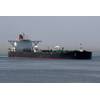Driverless Trucks to Dominate UK Ferry Traffic
Driver-less heavy goods vehicles (HGVs) will be to ship freight between the UK and continental Europe in the future, according to a new white paper published by the British Ports Association (BPA) and the specialist freight transport consultancy MDS Transmodal.
Commercial and environmental pressures will encourage freight operators to look at autonomous trucks and they would transform the way the ro-ro market works in Great Britain.
"Changes anticipated include significant growth in the market share of ‘driverless accompanied’ RORO traffic – particularly through North Sea and Western English Channel ports," it said.
Technical developments and commercial and environmental pressures are expected to encourage freight operators to look at new and innovative ways to ship the relatively high-value trade that will be transported in trailers through the British ports of the future.
The study examines how freight traffic between the British Isles and the Continent could change in the longer term after Brexit. It plots how a large proportion of the UK’s maritime traffic will fare in 2050 under an ‘autonomy and carbon reduction’ scenario in which autonomous and ultra-low emission HGVs have been widely deployed. This will have impacts on UK ports and shipping but also UK roads and other national infrastructure such as rail links.
‘The Impact of Autonomous and Ultra-Low Emission HGVs on the British RORO Port Market’ White Paper is released as part of the BPA’s Port Futures Program which examines emerging trends in the maritime industries and explores the opportunities and challenges to British ports that may present themselves over the next 50 years.
Phoebe Warneford-Thomson, Policy and Economic Analyst, at the British Ports Association said: “There are undoubtedly significant challenges ahead for the RORO sector and the wider ports industry, such as the transformation to net-zero carbon emissions and moves towards automation. However, with detailed analysis and forward-thinking as shown in this report, we can plan for the changes ahead and turn these into lucrative opportunities. By forecasting the future trends in the RORO sector and ensuring ports can cater for the potential growth in the ‘driverless accompanied’ type of traffic, they can anticipate these changes and be ready to maximize economic advantage.”
Commenting, Chris Rowland, Managing Director, at MDS Transmodal said: “Technical, regulatory and economic barriers remain with regards to the deployment of autonomous HGVs on the British highways network by 2050. However, given the policy imperative of reducing emissions and the market-based need to increase the efficiency of road freight transport, particularly given rising HGV driver costs, we anticipate a significant industry-wide effort to overcome these barriers. This would, in turn, have implications on other markets. Our modelling of a scenario for autonomous and electric vehicles in 2050 suggests that potential developments include a substantial shift of traffic towards ‘driverless accompanied’ RORO traffic through ports located on the North Sea and the Western English Channel and this would have implications for RORO port operations and the amount of land required.”
Related News
